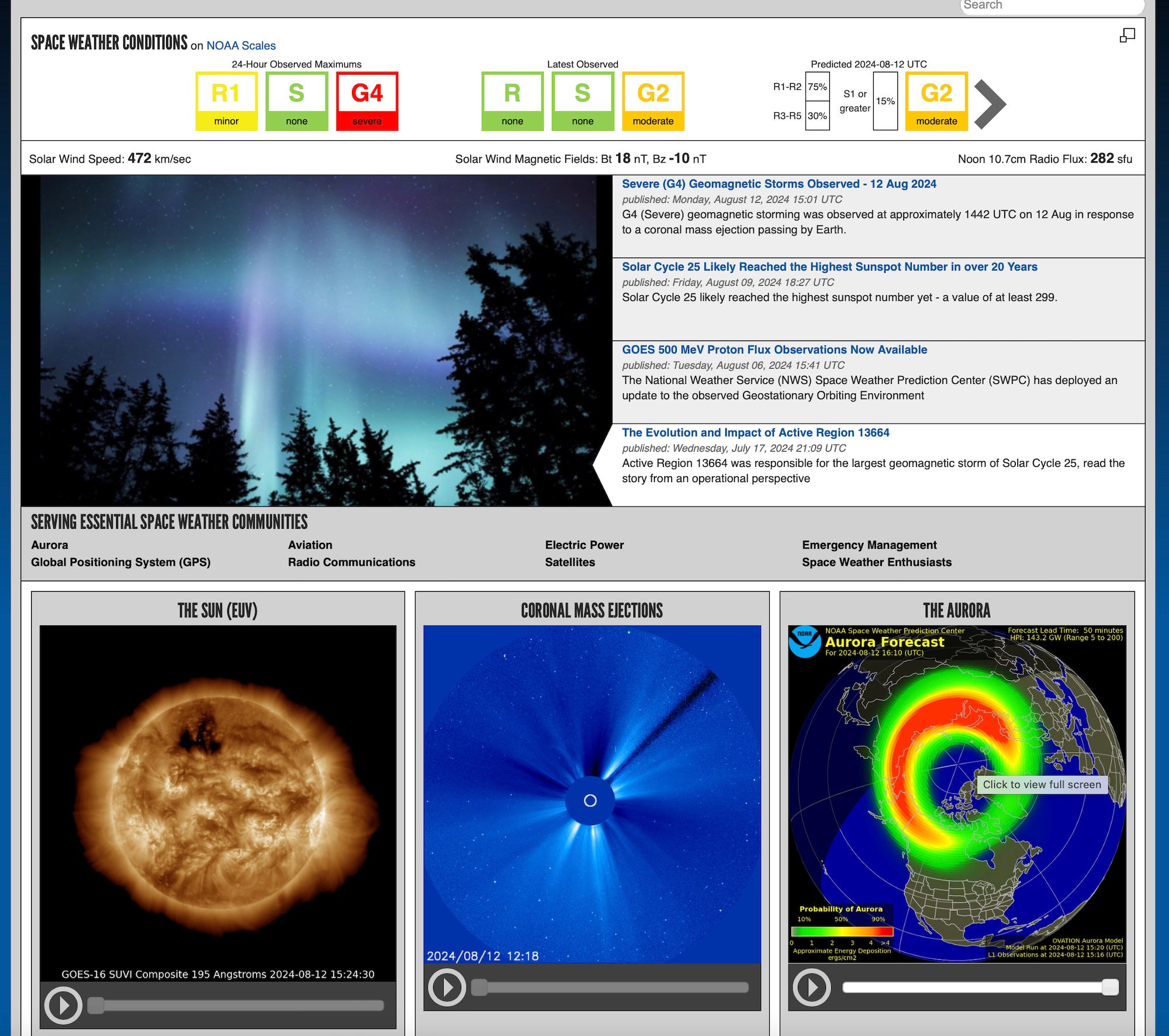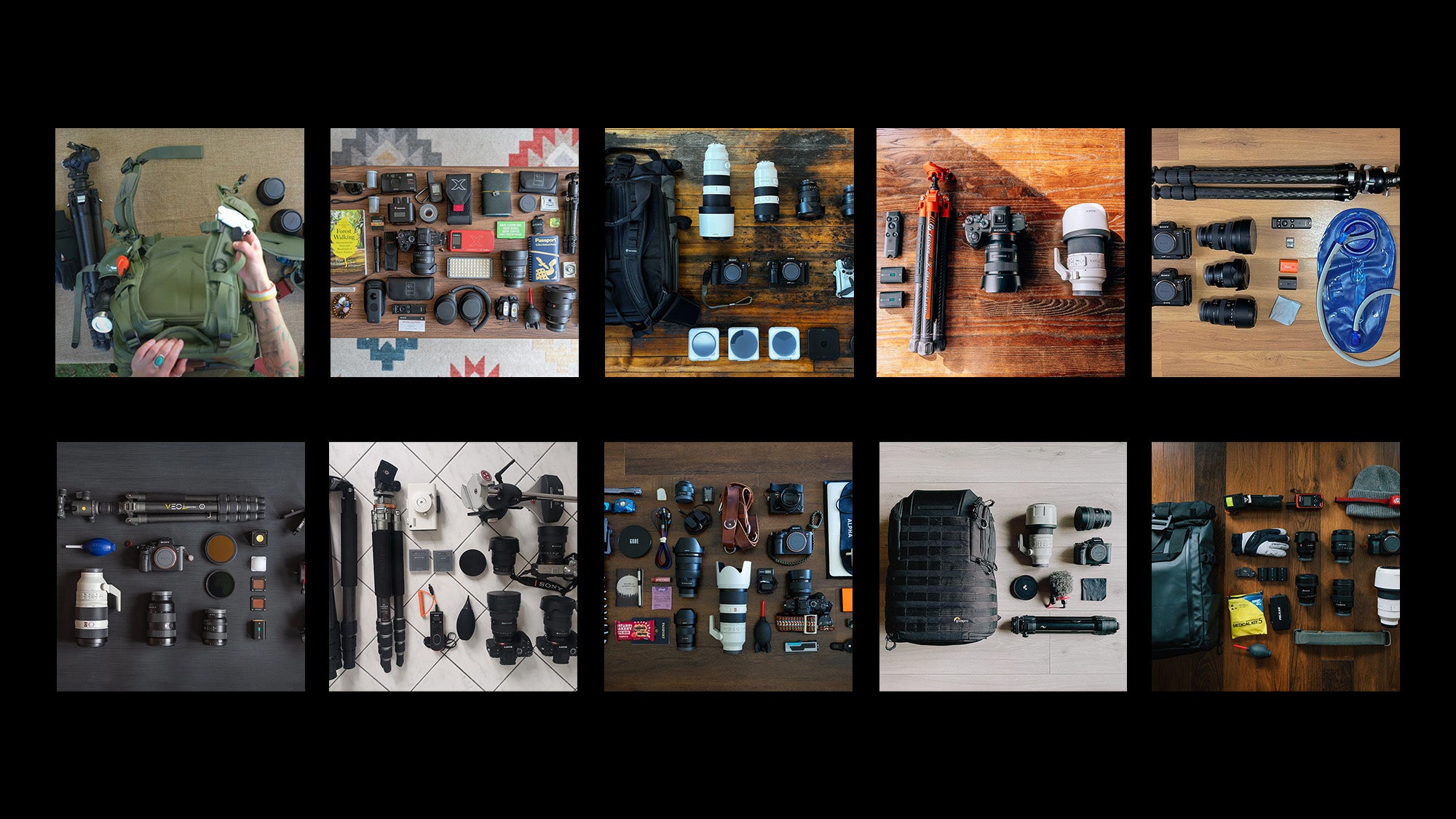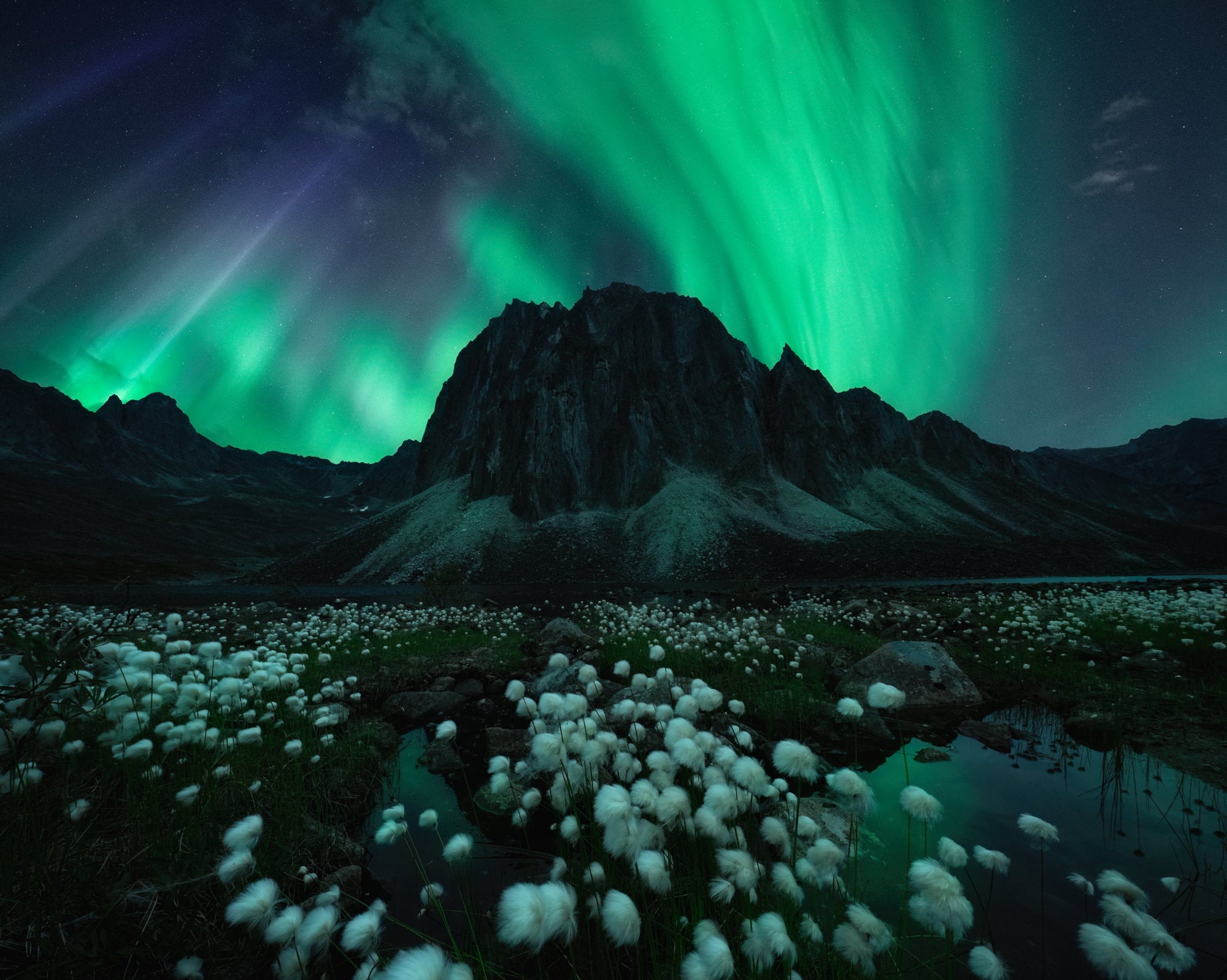Earlier in 2024, the northern lights made an appearance across much of the United States, and they appear to be making yet another return. On August 12, a G4 geomagnetic storm was observed – a storm that can create dazzling aurora light shows that can extend over many of the northern states and some of the lower Midwest to Oregon. Check out our resources below to help you photograph the phenomenon and stay up to date on the solar activity at NOAA's space weather site: swpc.noaa.gov.

Screenshot from swpc.noaa.gov
The sun is at it again…creating dazzling aurora light shows that could extend southward from the polar region. See our guide for more on how to capture them.
Resources: Photographing The Northern Lights
Photographer and Sony Alpha Ambassador Autumn Schrock has always been fascinated by the night sky and the mysteries that lie beyond Earth’s tallest peaks. She’s traveled to photograph the northern lights many times, even leading workshops to help others capture the spectacle. “Witnessing a phenomenon like the aurora is an experience that changes you,” she says. “Something in you lights up, mirroring the sky above, suddenly all you want to do is watch these mesmerizing lights swirl around forever and ever. It’s an adventure that seems to transport you to a different planet—one with magic and wands and Horcruxes.” When shooting astrophotography, she says to use wide lenses with fast apertures. She likes to use the low aperture of the Sony 20mm f/1.8 G for shooting the fast-moving aurora. Learn more about how she does it in How An Astro-photographer Captures The Nighttime Dance Of The Aurora.
Sony Alpha Ambassador Rachel Jones Ross is known for her stunning astro-landscape images, and she has plenty of experience incorporating the dance of the auroras into her compositions. She uses cameras like the Sony Alpha 1, Sony Alpha 7 IV and Sony Alpha 7S III when photographing the night sky, and she tends to pair them lenses like the Sony 12-24mm f/2.8 G Master zoom or Sony 14mm f/1.8 G Master. “For aurora shooting, I tend to shoot wide, regardless of the landscape. The aurora can be difficult to capture as a lot of the drama, shape, and movement happens much higher than the horizon line where the landscape sits. I still want the landscape to be a prominent feature of the image, but I also must allow room in the composition to capture the dance of the northern lights.” Learn more about the gear she uses and how she plans out her compositions in Pro Tips For Creating The Ultimate Dreamy Nightscapes.
Photo by Rachel Jones Ross. Sony Alpha 7S III. Sony 12-24mm f/2.8 G Master.
Having a foundational understanding of night and astrophotography is going to help you properly capture the auroras. Sony Alpha Ambassador Stan Moniz has been shooting and teaching astrophotography for years, and he’s simplified the process into some basics to help you get started. Learn more in Photo Fundamentals: Astro Exposure Basics Explained.
Choosing the right gear for photographing the northern lights is integral to the final result. You want to have a camera that excels in low-light conditions and can handle long exposure times while minimizing noise and a fast lens that's sharp to the edge of the frame when used wide open. Take a look at these 10 kits from astrophotographers, featuring a variety of Sony gear that would perform well when photographing dancing auroras: 10 Astrophotographers Share What They Use To Shoot For The Stars.

10 Astrophotographers Share What They Use To Shoot For The Stars
Creative Inspiration – See How These Creators Did It
Sometimes the greatest inspiration comes from seeing how other photographers have done it, and below we have a list of creators who have shared how they’ve previously captured nature’s ultimate light show.
- Behind The Shot: Luck, Preparation And Capturing An Epic Aurora
- Behind The Shot: A Time Blending Technique To Make A Dramatic Aurora Image
- Behind The Shot: Capturing A Surprise Aurora With A Fast Zoom
- Behind The Shot: A Northern Lights Moonbow
- Behind The Shot: Painting The Sky With Auroras
- Behind The Shot: Photographing An Aurora Down Under
- Photo Of The Day: An Epic Aurora Reflection With A Fast Wide-Angle Zoom




